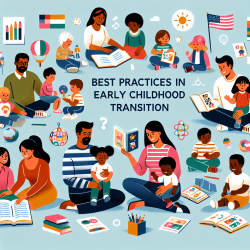Understanding the Impact of Food Deserts on Children with Cystic Fibrosis
The recent study titled "Geospatial Analysis of Food Deserts and Their Impact on Health Outcomes in Children with Cystic Fibrosis" sheds light on the significant influence of food deserts on pediatric health, particularly for those with cystic fibrosis (CF). This research highlights the need for practitioners to consider geographic and socioeconomic factors when addressing health outcomes in children with CF.
Key Findings from the Research
The study conducted a geospatial analysis using a Geographic Information System (GIS) to assess the association between food deserts and health outcomes in children with CF. It was found that children living in food deserts or within close proximity (600 ft or 1200 ft) had significantly higher odds of having a non-ideal body mass index (BMI) compared to those living outside these areas.
Specifically, the odds ratios for non-ideal BMI were:
- 3.18 times higher for those living in a food desert.
- 4.41 times higher for those within a 600 ft buffer zone.
- 2.83 times higher for those within a 1200 ft buffer zone.
These findings underscore the importance of addressing food access as a determinant of health in children with CF.
Implications for Practitioners
Practitioners working with children with CF should consider the following actions based on the study's outcomes:
- Routine Screening: Implement regular screening for food insecurity and proximity to food deserts as part of the care protocol for children with CF.
- Intervention Development: Develop interventions aimed at increasing access to healthy and affordable food, particularly in identified food deserts.
- Collaborate with Community Resources: Partner with local organizations and government initiatives to enhance food access and reduce the impact of food deserts.
Encouraging Further Research
This study provides a foundation for further research into the effects of food deserts on health outcomes in children with CF. Future studies could expand on this work by exploring interventions that effectively mitigate the negative impacts of food deserts.
To read the original research paper, please follow this link: Geospatial Analysis of Food Deserts and Their Impact on Health Outcomes in Children with Cystic Fibrosis.










